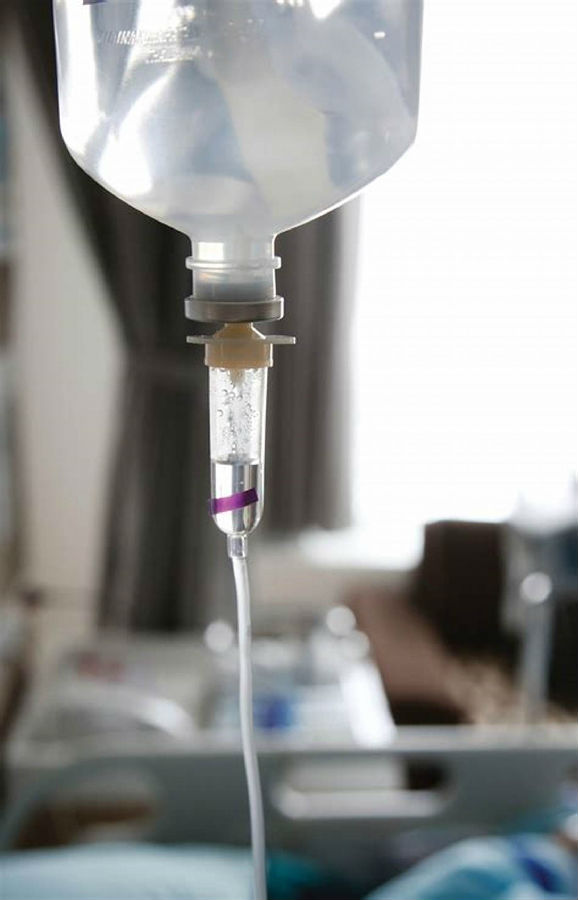Finally ketamine crossed back into commercial drug development. In 2009, Johnson & Johnson lured away Husseini Manji, a prominent NIH researcher who'd worked on the drug, to run its neuroscience division.
最后,氯胺酮又回到商业药物开发的领域中。2009年,强生公司吸引了一位美国国家卫生研究院研究该药物的著名研究员侯赛尼·曼吉去管理其神经科学部门。
J&J didn't hire him explicitly to develop ketamine into a new pharmaceutical, but a few years into his tenure, Manji decided to look into it.
强生并未明确雇用他是为把氯胺酮开发成新药,但在任职几年后,曼吉决定对此进行调查。
This time it would come in a nasal-spray form of esketamine, a close chemical cousin. That would allow for patent protection.
这次研制出来的是艾氯胺酮鼻腔喷雾剂,氯胺酮和艾氯胺酮在化学性质方面相关。这样可以进行专利保护。
Further, the nasal spray removes some of the challenges that an IV form of the drug would present. Psychiatrists, for one thing, aren't typically equipped to administer IV drugs in their offices.
此外,鼻腔喷雾剂消除了静脉注射式药物构成的一些挑战。一方面,精神科医生的诊室中通常不具备进行静脉注射的设备。
While these wheels were slowly turning, some doctors—mostly psychiatrists and anesthesiologists—took action. Around 2012 they started opening ketamine clinics.
情况慢慢进展的同时,一些医生,主要是精神科医生和麻醉师开始采取行动。约在2012年左右,他们开始开设氯胺酮治疗诊所。
Dozens have now popped up in major metropolitan areas. Insurance typically won't touch it, but at these centers people can pay about $500 for an infusion of the drug.
现在,已有数十家进入主要的大都市区中,它们通常不在保险负责的范围之内。但在这些治疗中心,人们可以花大约500美元购买注射药物。
It was at one time a cultural phenomenon—a 2015 Bloomberg Businessweek story called it "the club drug cure." Since then, the sense of novelty has dissipated.
这曾一度成为一种文化现象,2015年美国商业周刊将称其为“娱乐用药治疗”。从此以后,人们对其的新奇感逐渐消失。

In September the American Society of Ketamine Physicians convened its first medical meeting about the unconventional use of the drug.
9月,美国氯胺酮医师协会召开了有关非常规使用该药物的首次医学会议。
A ketamine clinic can be the way out of this scenario—for people with access and means. For Dana Manning, a 53-year-old Maine resident who suffers from bipolar disorder, $500 is out of reach.
对于那些能够获取药物的人来说,氯胺酮治疗诊所是一种解决方案。但像患有双相情感障碍的戴纳·曼宁,500美元可是一笔遥不可及的大数目。戴纳·曼宁今年53岁,居住在缅因州。
"I want to die every day," she says. After trying to end her life in 2003 by overdosing on a cocktail of drugs including Xanax and Percocet, Manning tried virtually every drug approved for bipolar disorder.
“我每天都想死,”她说。2003年,曼宁试图过量服用包括赞安诺和对乙酰氨基酚片剂在内的混合药物来结束自己的生命,之后她尝试了几乎所有批准用于治疗双相情感障碍的药物。
None stopped the mood swings. In 2010 the depression came back so intensely that she could barely get out of bed and had to quit her job as a medical records specialist.
没有哪种药物能停止她的情绪波动。2010年,抑郁情绪强烈回潮,使她几乎不能起床,不得不辞去医疗记录专员的工作。
Electroconvulsive therapy, the last-ditch treatment for depressed patients who don't respond to drugs, didn't help.
对于使用药物治疗无效的抑郁症患者,电休克治疗是最后一种治疗方法。
Her psychiatrist went deep into the medical literature to find options and finally suggested ketamine. He was even able to get the state Medicaid program to cover it, she says.
她的精神科医生深入研究医学文献,寻找可选用的治疗方案,最后建议她使用氯胺酮。她说,他甚至获取了缅因州医疗补助计划来帮她支付治疗费用。
She received a total of four weekly infusions before she moved to Pennsylvania, where there were more family members nearby to care for her.
她每周注射一次,连续治疗四周。后来,曼宁搬到了宾夕法尼亚州,那有更多的家人能陪伴左右照顾她。













